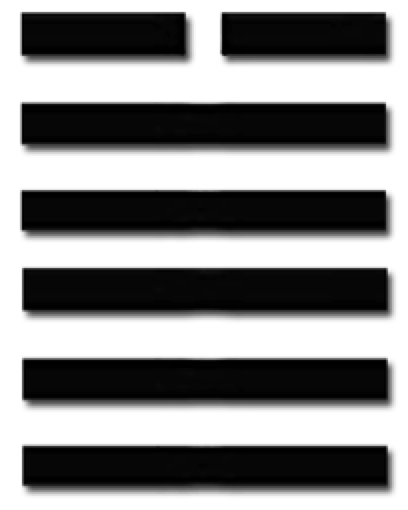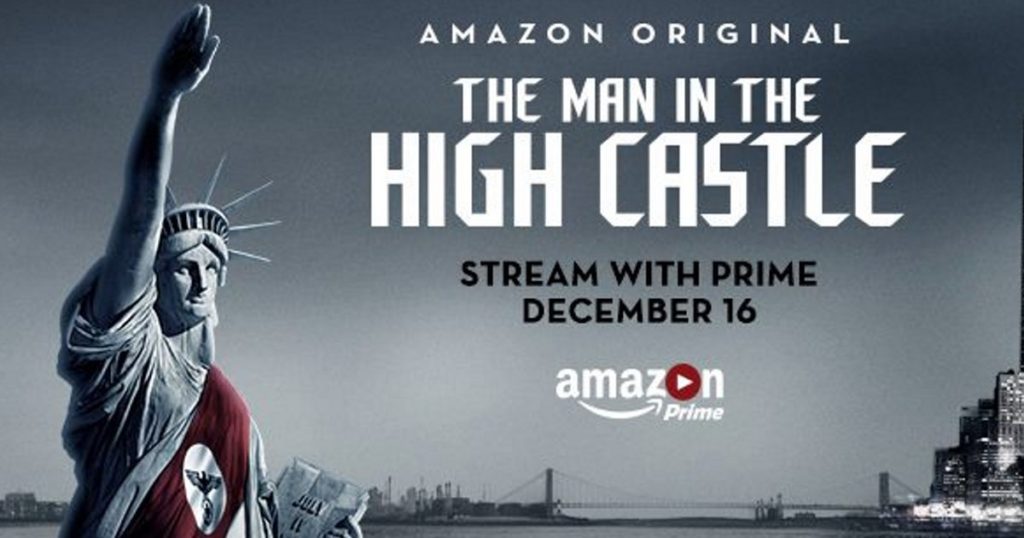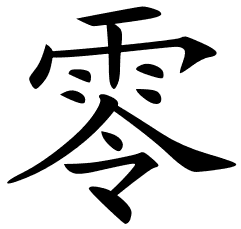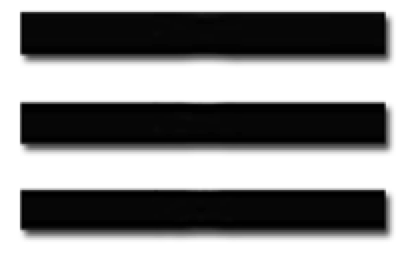New Year’s Day 2016 – and this morning I finished Philip K. Dick’s 1962 novel The Man in the High Castle, a TV version of which is currently being streamed on Amazon Prime, though I haven’t seen it.
Having read a number of other science fiction books in the past few weeks (among them Ted Chiang’s Arrival collection of short stories and T.C Boyle’s The Terranauts), I struggled to get into this one – but then something clicked.
Critically, on page 209, I came across Dick’s reference to the I Ching‘s Hexagram 43, representing “Break-Through”. Have always had an eye for symbolism, with my 2014 book The Zeronauts built around the Chinese ideogram ling, standing for zero:
And way back in the mid-1990s, when I was evolving and promoting the Triple Bottom Line, I used the I Ching trigram shown below, Qián (The Creative/Heaven), often interpreted as representing Earth on the bottom line, Humanity in the middle and Heaven on top.
With the Triple Bottom Line, now the core agenda of the burgeoning B Corporation movement, I ran a version of the trigram as Environment, Economy, Society – or, more colloquially, People, Planet and Profit/Prosperity.
For many years thereafter, SustainAbility used the logo I had co-evolved with our designer, Rupert Bassett, involving a trigram offset by a spiral, presenting sustainability as an ongoing tension between balance and evolution.
With Hexagram 43 playing such a pivotal role in The Man in the High Castle, and the interpretation (see below) aligning so powerfully with what we do at Volans, I thought I would look it up – and was stunned to find that the I Ching‘s representation of “Break-Through” (in their hyphenated rendering of the word) is distilled in the following hexagram:
 Here the trigram Duì (The Joyous/Lake) is superimposed on Qián to create Hexagram 43, Guai (Displacement).
Here the trigram Duì (The Joyous/Lake) is superimposed on Qián to create Hexagram 43, Guai (Displacement).
I have sometimes been asked how our post-2012 “Breakthrough” agenda links to the Triple Bottom Line. Well, here is an age-old visualisation. And here are some of the lines that caught my attention as I read page 209 of Philip Dick’s novel:
THE JUDGMENT
BREAK-THROUGH. One must resolutely make the matter known
At the court of the king.
It must be announced truthfully. Danger.
It is necessary to notify one’s own city.
It does not further to resort to arms.
It furthers one to undertake something.
We have long seen it as our mission to present the system change agenda in the top echelons of business, in what we call the “Global C-Suite”, the boardrooms and C-suites of the world’s 1,000 most influential (but not necessarily the biggest) businesses.
At times, we have been described as “speaking truth to power”. And we know it is a high risk process: Danger indeed.
I see “one’s own city” as referring to what we have come to call the “Sustainability Industry,” the solutions-oriented economic sector that has grown up in the 30 years since the publication of the Brundtland Commission’s 1987 report Our Common Future.
Our latest report, Breakthrough Business Models: Exponentially More Social, Lean, Integrated and Circular is in part directed to the Sustainability Industry, in effect our own city.
In terms of the “resort to arms,” according to the interpretation of Hexagram 43, we have long aimed to operate as critical friends of business, serving a “grit in the corporate oyster” – but in the process retaining the freedom to move between and connect with different worlds, realities and agendas.
Dick’s novel within a novel, story within a story, is The Grasshopper Lies Heavy. It depicts an alternate universe in which the Axis powers win the Second World War, rather than losing – with the result that much of the United States is occupied by Germany and Japan. The alternate reality, however, is not ours, with Churchill staying on after the war and Britain eventually taking over from the USA as superpower. Few things could seem further fetched as 2016 draws to a close.
Whichever realities spool out from this point, the ability to move between different interpretations will remain crucial. To do so effectively, we are advised by the I Ching, one must know oneself – and work hard to ensure that one’s own house (or enterprise) is in order.
That is a continuing task for 2017. And so it is to “undertake something.” Hexagram 42 is about resolution and decision. And that’s how this point in time now feels. Which is probably why page 209 resonated so strongly with this reader. And now I hear the shutters of the new year creaking open, with fireworks bursting in the distance.




Thank you for your work with TBL. I’m wondering how your thinking has evolved with regard to the 3rd leg of TBL: economy. In some contexts, I’ve seen “profit,” and in others it’s been “prosperity.” In this post, you refer to “People, Planet and Profit/Prosperity.”
In my work as an education consultant, I characterize sustainability as equity between people, planet, and the economy — with an appreciation for its definition in Our Common Future.
So which do you think is a more inclusive term: economy, profit, or prosperity? Does it depend on the audience, and/or is there benefit from advancing one term regardless?
When I came up with the 3Ps in 1995, I used ‘Profit’ because it was more provocative, but also referenced ‘Prosperity’, because it was more generous and inclusive.
If we take the latter, it is obviously wider than ‘Economy’, but in the end it comes down to whatever you can talk to best.